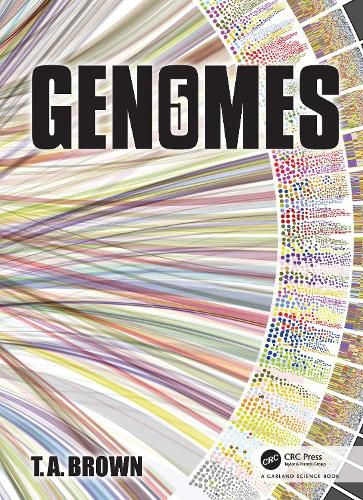Readings Newsletter
Become a Readings Member to make your shopping experience even easier.
Sign in or sign up for free!
You’re not far away from qualifying for FREE standard shipping within Australia
You’ve qualified for FREE standard shipping within Australia
The cart is loading…






Genomes 5 has been completely revised and updated. It is a thoroughly modern textbook about genomes and how they are investigated. As with previous Genomes editions, techniques come first, then genome anatomies, followed by genome function, and finally genome evolution. The genomes of all types of organism are covered: viruses, bacteria, fungi, plants, and animals including humans and other hominids.
Genome sequencing and assembly methods have been thoroughly revised including a survey of four genome projects: human, Neanderthal, giant panda, and barleyto include new developments in long-read DNA sequencing. Coverage of genome annotation emphasizes genome-wide RNA mapping, with CRISPR-Cas 9 and GWAS methods of determining gene function covered. The knowledge gained from these techniques forms the basis of the three chapters that describe the three main types of genomes: eukaryotic, prokaryotic (including eukaryotic organelles), and viral (including mobile genetic elements). Coverage of genome expression and replication is truly genomic, concentrating on the genome-wide implications of DNA packaging, epigenome modifications, DNA-binding proteins, non-coding RNAs, regulatory genome sequences, and protein-protein interactions. Also included are examples of the applications of transcriptome analysis, metabolomics, and systems biology. The final chapter is on genome evolution, focusing onincluding the evolution of the epigenome, using genomics to study human evolution, and using population genomics to advance plant breeding. Established methods of molecular biology are included if they are still relevant today and there is always an explanation as to why the method is still important.
Genomes 5
is the ideal text for upper-level courses focused on genomes and genomics.Key Features
A highly accessible and well-structured book with chapters organized into four parts to aid navigation
Superb artwork illustrates the key concepts and mechanisms
Each chapter has a set of short-answer questions and in-depth problems to test the reader’s understanding of the material Thoroughly up to date with reference to the latest research from the 2020s
$9.00 standard shipping within Australia
FREE standard shipping within Australia for orders over $100.00
Express & International shipping calculated at checkout
Genomes 5 has been completely revised and updated. It is a thoroughly modern textbook about genomes and how they are investigated. As with previous Genomes editions, techniques come first, then genome anatomies, followed by genome function, and finally genome evolution. The genomes of all types of organism are covered: viruses, bacteria, fungi, plants, and animals including humans and other hominids.
Genome sequencing and assembly methods have been thoroughly revised including a survey of four genome projects: human, Neanderthal, giant panda, and barleyto include new developments in long-read DNA sequencing. Coverage of genome annotation emphasizes genome-wide RNA mapping, with CRISPR-Cas 9 and GWAS methods of determining gene function covered. The knowledge gained from these techniques forms the basis of the three chapters that describe the three main types of genomes: eukaryotic, prokaryotic (including eukaryotic organelles), and viral (including mobile genetic elements). Coverage of genome expression and replication is truly genomic, concentrating on the genome-wide implications of DNA packaging, epigenome modifications, DNA-binding proteins, non-coding RNAs, regulatory genome sequences, and protein-protein interactions. Also included are examples of the applications of transcriptome analysis, metabolomics, and systems biology. The final chapter is on genome evolution, focusing onincluding the evolution of the epigenome, using genomics to study human evolution, and using population genomics to advance plant breeding. Established methods of molecular biology are included if they are still relevant today and there is always an explanation as to why the method is still important.
Genomes 5
is the ideal text for upper-level courses focused on genomes and genomics.Key Features
A highly accessible and well-structured book with chapters organized into four parts to aid navigation
Superb artwork illustrates the key concepts and mechanisms
Each chapter has a set of short-answer questions and in-depth problems to test the reader’s understanding of the material Thoroughly up to date with reference to the latest research from the 2020s